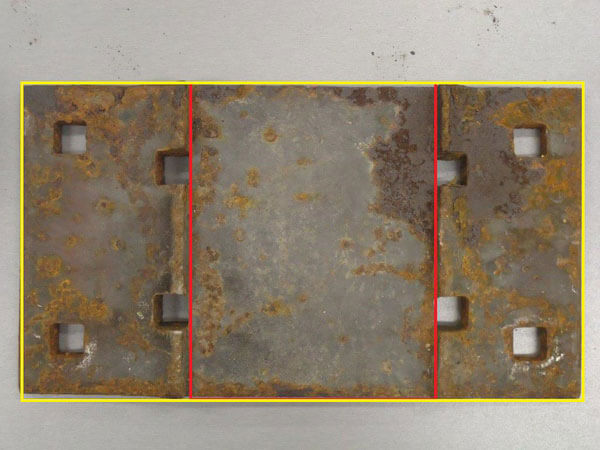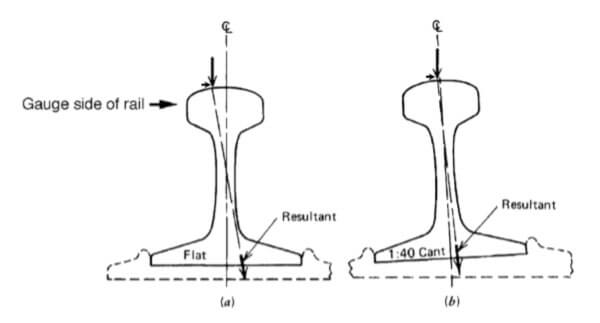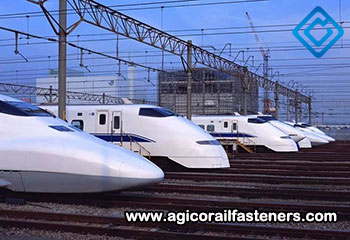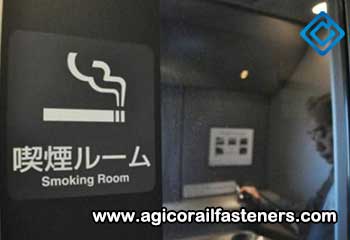Why We Need Railroad Tie Plates under the Rail Track?
Railroad Tie Plate Main Functions
Rail track is not fixed on the rail sleeper directly, but with rail tie plate fixed on it. Wooden sleeper generally use steel plates and concrete sleeper use another kind of tie plate which makes by composite material.
Railroad tie plate has four main functions:
- Protect the sleeper from wear and tear;
- Provide a flat contact surface for the rail bed;
- Prevent rail crawling;
- For wooden sleepers, railroad tie plate has another function that is provide cant for the rail track.
Let’s discuss every function of railroad tie plate.
Firstly, Protect the Sleeper from Wear and Tear.
Due to steel rail touch with rail sleepers produced great pressure, so in order to protect the sleepers; we need to find a way to reduce pressure. For wooden sleepers, because of wood has weak ability of under pressure, it is necessary try to increase the contact area to disperse the pressure. In the picture above, the area that point out by the red frame is the rail bed’s projection, the yellow area is the rail plate’s projection. Obvious, yellow area is bigger than the red one. The fact proved that the larger area, the smaller pressure. For concrete sleeper, concrete sleeper compared to wooden sleeper has a relatively strong pressure bearing capacity; therefore, the demand for dispersive pressure is relatively small. However, when the train running, because rail and wheel is not round, orbit dynamic impact such as the change of the intensity, can be as high as twice the train load, the impact of the so big strength is still likely to be damaging to the concrete sleeper. As a result, concrete sleeper often use composite railroad tie plate. This kind of tie plate is softer and can reduce dynamic impact to some extent.
Secondly, Provide a Flat Contact Surface for the Rail Bed.
The upper surface of the rail sleeper cannot be absolutely flat. Originally in the projection area on the rail bed is not large, if the contact surface is uneven, so the contact area will be smaller. Therefore, the use of rail plate can provide flat contact surface, thereby increasing the contact area, reducing pressure.
Thirdly, Prevent Rail Crawling.
At the place that rail tie plate touch with rail bed there are two "bulges" (as in the figure above red box side overlap), so this tie plate is called "Double Shoulder Tie Plate". Don’t look down upon these two bulges; they can prevent the rail track lateral movement. Friction coefficient of the composite double shoulder tie plate and the rail track is greater than the coefficient of friction between the rails and concrete sleepers, with Elastic fasteners used can provide sufficient lateral and vertical restraints.
Finally, for Wooden Sleepers, Railroad Tie Plate Provide Cant for the Rail Track.
As shown above, rail sleepers and rail tracks are not arranged vertically, but gauge side is inclined at an angle, so it can provide a better wheel-rail contact surface. The rail track inclination angle of North American is 1:40. For concrete sleepers, rail inclination angle is integrated in the rail sleeper, so that sleeper rail contact surface (Rail Seat) itself is inclined.
We receive enquiries in English, Español (Spanish), Русский язык (Russian), Français (French) and العربية (Arabic). Our professional team will reply to you within one business day. Please feel free to contact us!





